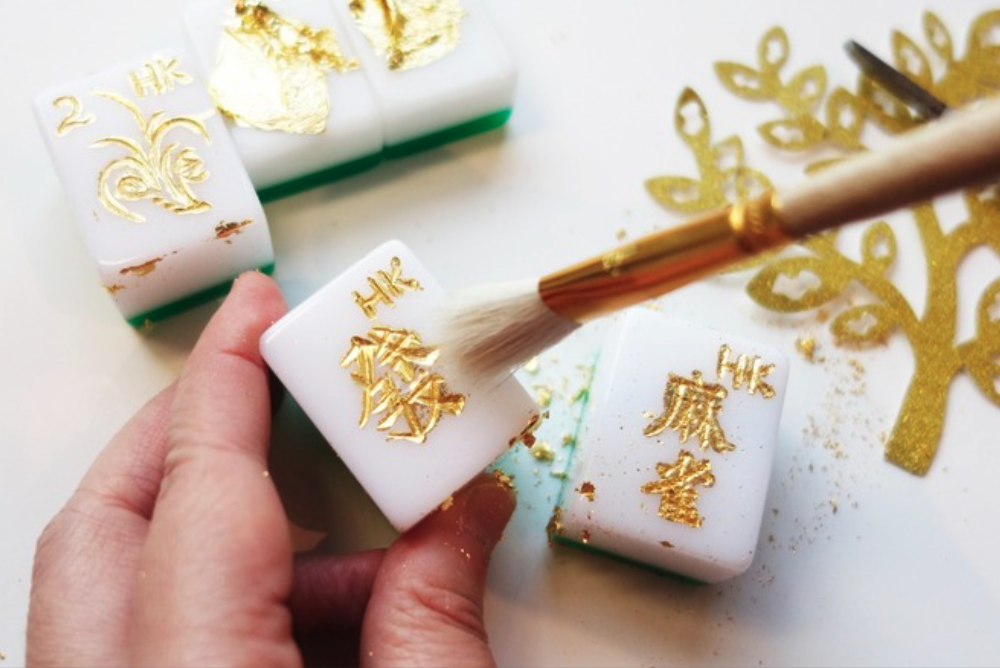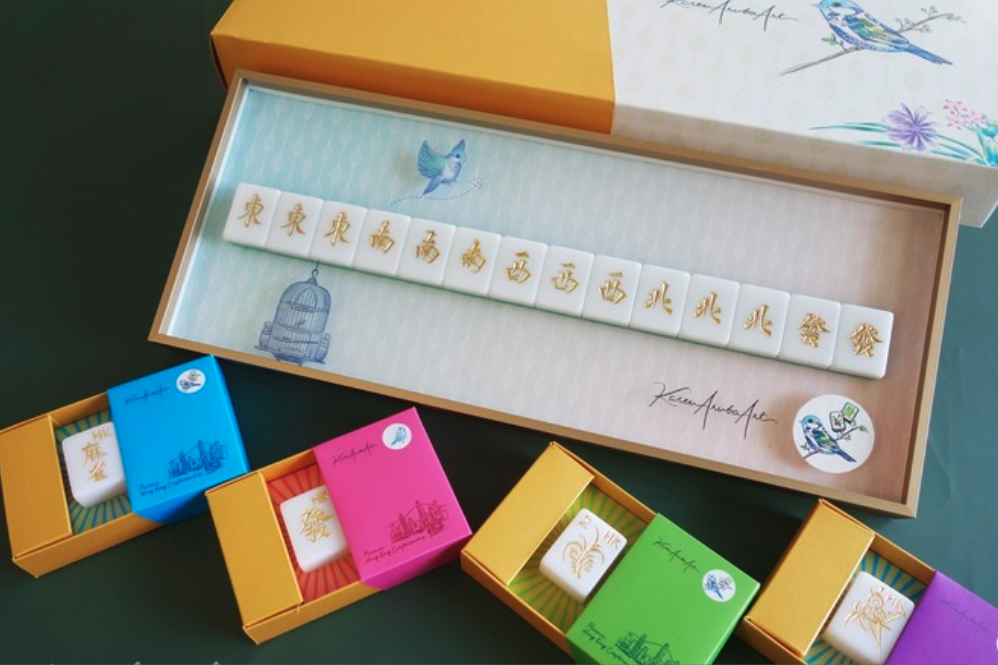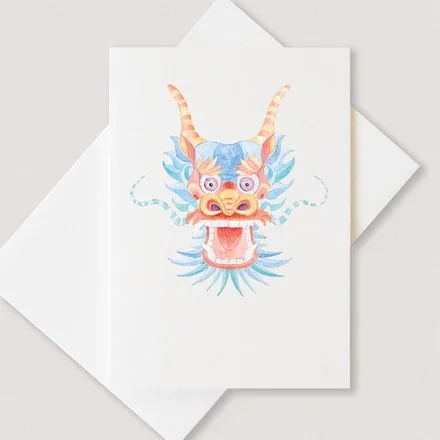The Art of Traditional Hong Kong Hand-Carved Mahjong Tiles
5 Mins Read
Have you ever wondered how those beautiful, intricate hand-carved mahjong tiles are made? Hand-carved mahjong is an intangible cultural heritage in Hong Kong; it's a traditional craft that has been passed down through generations. It takes time, patience, and expertise to create these beautiful works of art. The intricate design and craftsmanship found in hand-carved Mahjong tiles cannot be emulated by machine-made mah jong. With hand-carving, each tile is unique and reflects the artist’s vision and skill. This makes them one-of-a-kind and highly valuable pieces.
In this blog post, we will take a look at the art of hand-carving mahjong tiles. You'll be amazed at the amount of detail and skill that goes into each one of these works of art!
The history of hand-carved mahjong
Mahjong is a fun game that has been enjoyed worldwide by family and friends since its invention in the mid-1800s. Although many versions of machine-made mahjong today exist, it was originally played with hand-carved tiles. Hand-carving each tile would have been a laborious process, as it required a mallet and chisel to create these intricate pieces and markings on each one. Not only that but assembling all 144 pieces into an original set would have taken an incredibly long time! Many of these antique sets still survive today, offering us glimpses into how people in the past might have enjoyed one another's company as they whiled away hours playing this classic game.
Mahjong is an intangible cultural heritage in Hong Kong
Mahjong is an incredibly popular game in Hong Kong and its influence can be seen all across the city. Playing mahjong is a beloved leisure activity for many people, from the elderly gathering together with their family members to young people playing online versions of the game. Deeper than just a leisurely game, Mahjong holds cultural importance within Hong Kong society - it was even recently inscribed onto the "Representative List of the Intangible Cultural Heritage of Humanity" by UNESCO. Whether played at grand tournaments or around a kitchen table, Mahjong continues to bring generations together, spreading insight and joy everywhere it goes!
The Process of hand-carving traditional Mah Jong Tiles
The process of creating these intricate works of art is quite labor-intensive. First, the wood must be cut into small blocks called 'shovels' before it can be hand-carved. These shovels are then heated with hot oil or steam so they can be carved into specific shapes. After carving, individual designs are often added to bring out the beauty of each piece. This process alone can take hours for just one tile! However, the rewards are worth it as the finished product is often breathtakingly beautiful with its detailed patterns and colors.
Crafting mahjong tiles is an art form within itself. By hand-carving the tiles, artisans utilize various tools such as tweezers, pliers, and special carving knives to form the precise patterns found on the finished product. Producing a tile begins with a single piece of bone or ivory, into which intricate symbols and designs are carved, one at a time. Next, each tile is hand-painted with varnish paint before they are left to dry and later polished with lacquer. Finally, this ancient Chinese custom has been transformed into wooden tiles found in-game kits worldwide. It's a process that requires an immense amount of skill and patience but has resulted in countless hours of entertainment over multiple generations!
Hand-carved Mahjong tiles are considered more precious than machine-made ones because they reflect a level of artistry that machines simply cannot replicate. Each handmade tile has its own unique character due to slight variations in design or color which adds to its charm and appeal. Furthermore, when you buy a set of hand-carved mahjong you become part of an ancient tradition as well as an owner of something truly special.
The different designs of mahjong tiles signs that can be found on mahjong tiles
Each set of hand-carved mahjong tiles is unique, crafted with different symbols or designs depending on the region where it was made. Symbols often depict animals, plants, and Chinese characters. In addition to these symbols are various colors that further add to their beauty - red for luck and joy, blue for peace and harmony, and green for health and longevity. Additionally, many sets feature dots that represent money; something that is dearly cherished by all! Mahjong tiles come in all shapes and sizes, with a seemingly endless range of beautiful designs that make the game even more fun and enjoyable to play. From classic oriental designs featuring motifs such as dragons and strings of coins to modern-themed variants depicting beehives and bulldogs, you can find almost any design imaginable on mahjong tiles. Besides, the tiles themselves come in different materials such as bamboo and resin, giving them an added aesthetic charm that ultimately enhances one's gaming experience. Who knew pursuing your passion for mahjong could so easily also become a journey into the heart of art?
How to play a game of mahjong
Mahjong is an incredibly fulfilling game to play with family and friends, and it's fairly simple to learn the basics. To begin, 4 players separate into two teams. Each player will receive 13 tiles at random with the objective is creating one winning hand out of the pieces they are dealt. You can choose to form a particular pattern of tiles or combine your pieces to create points associated with a specific set. Since mahjong involves both abilities like strategy and luck from the draw of the tiles, it is a game that is always fresh and keeps you on your toes! As if this wasn't enough to keep you entertained for hours, friendly banter between opponents makes for an even more enjoyable experience.
Hand-carved Mahjong Preserve traditional craftsmanship
Mahjong is a classic, centuries-old game with a rich history and cultural significance, not just in Hong Kong but around the world. The process of hand-carving mahjong tiles is both an art form and a craft, requiring years of practice and patience. Crafting mahjong tiles requires tremendous skill and patience in order to create these works of art. It's a craft that has been passed down through generations in Hong Kong and beyond - each tile a reminder of the rich cultural heritage associated with this beloved game. Hand-carved Mahjong tiles also preserve an important tradition of craftsmanship. And the best part: no two sets are ever the same! Although it may be difficult to find traditional hand-carved mahjong sets these days, we hope that through articles like this one, people will come to appreciate the value of this tradition and support those who carry on the skill. So take some time to appreciate the artistry behind each one, and you're sure to be in awe of these hand-carved masterpieces.
Thanks for reading! If you enjoy reading this blog post, please share it with your family and friends.
February 2023
About the author
The Qraftie blog aims to provide you stories related to craftsmanship, culture and lifestyle around Hong Kong.
















